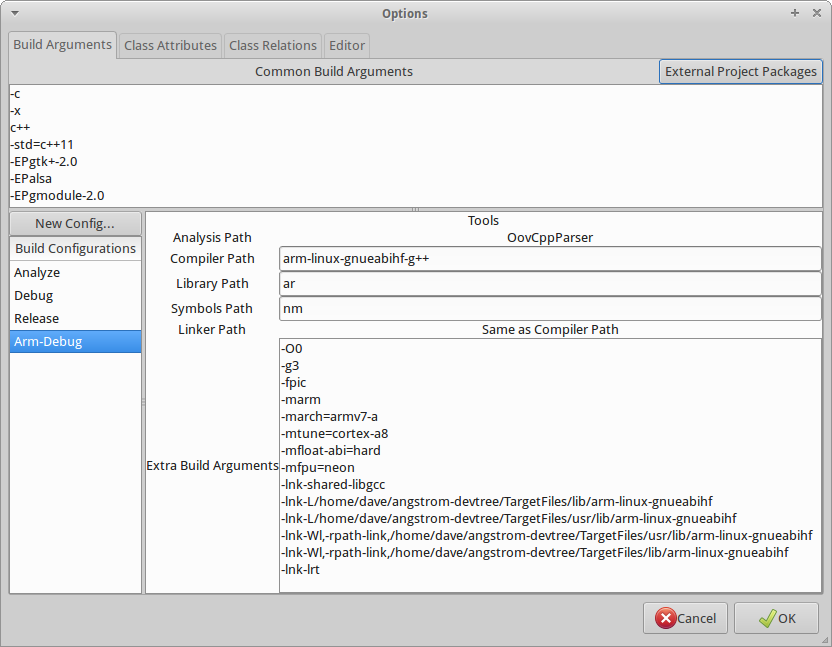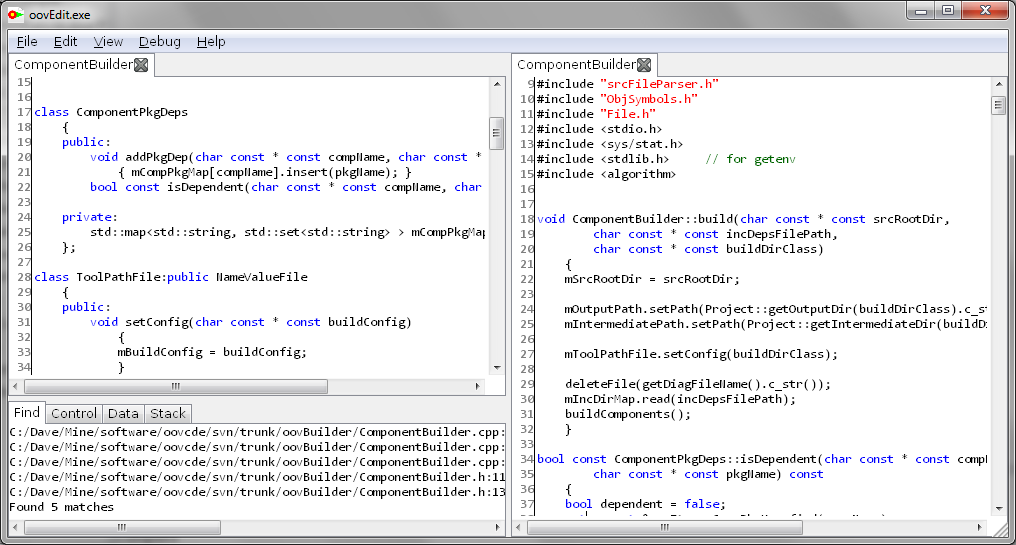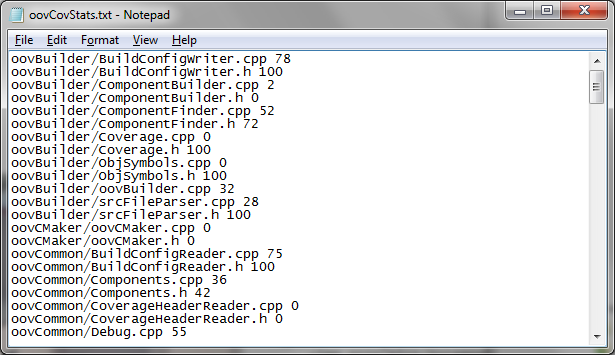The following shows a zone diagram
where each point in a circle is a class. The diagram shows hundreds of
classes and their relations to each other. By applying filters, very large projects
can be analyzed.
Many of the created diagrams are similar to UML, but have optional additional
features named Oov Symbols.
The diagrams can be edited manually and saved as .SVG files.
The following shows a class diagram that shows inheritance,
aggregation, and shows classes that are used internal to methods or
as method parameters.

The following shows a portion
diagram that shows the composition of a class. It shows which methods use
which member variables.

The following shows a sequence diagram that shows guard conditions
and method calls in classes. The guard condition nesting is shown
along the lifelines.

Oovcde has a multithreaded build system
that uses dependency information from the analysis for easy setup, and also
supports cross compiling.
The following shows the build settings dialog.

There are other documents including Component diagrams and Include diagrams.
The code editor has syntax highlighting, code completion, and a debugger.

The following shows the code editor.

Complexity measurements are provided for
each method of a class.

The following shows the complexity analysis results.

Code test coverage instruments the
code and produces coverage information.

The following shows the output from test coverage, and
shows the number percentage of the file that was covered.
In addition, it is possible to view how many times each
block of code was run.

Duplicate code is found and listed.

The following shows the output from duplicate code detection and
shows the number of lines that match.

There are other statistics displayed as well.

For more information, see the User Guide, and for an example of design documents that can be created with Oovcde, see the Oovcde Design document.
Project Goals
- Mainly for C++, or CLang related languages with header files and classes
- Visibility of code and design information
- Focused on programmer productivity with no hassles and papercuts
- Facilitate high quality design and code
- Use modern computer architectures, flash disks, multicore processing, work in the background
- Fast, lightweight, minimal dependencies
- Separate source files from output artifacts